24 Most Beautiful National Parks in the United States
Here, we rounded up the most beautiful national parks to visit in America, from the Grand Canyon to Yosemite to Great Sand Dunes.


From snowy mountain tops to sunset-hued canyons, all 423 national park sites in the United States are worth visiting. But that just makes it all the more difficult to choose which to head to for your next vacation. Whether you’re looking for an easy stroll in a pristine nature preserve or an epic multi-day adventure, we rounded up the 24 most beautiful gems of the U.S. National Park system. Some sites are protected for their history, others for recreation, and most simply for the natural wonder of its surroundings.
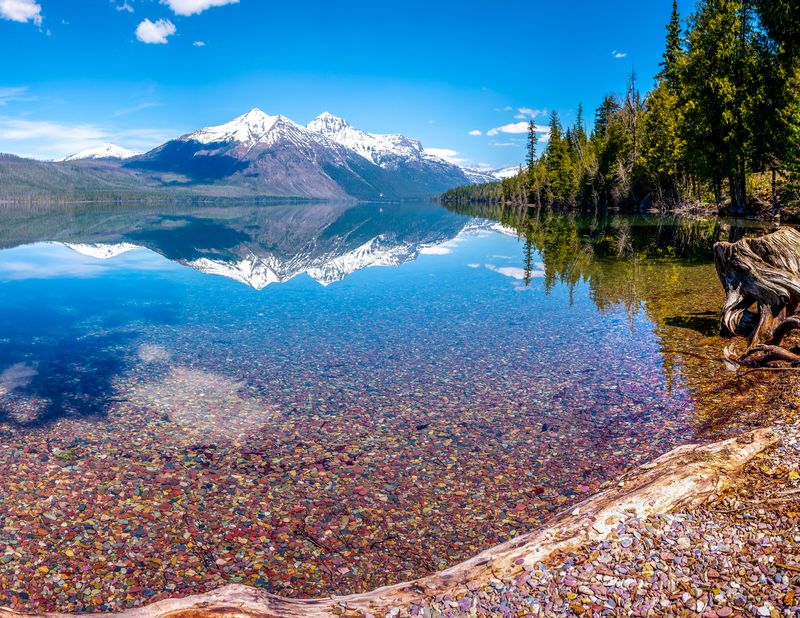
Glacier National Park
Known for its seemingly endless acres of rugged landscapes, Glacier National Park was established in 1910. Today, it remains a symbol of shared stewardship between Canada and the United States. Glacier National Park is home to lakes, meadows, and more than 700 hiking trails and glacier-carved peaks. Just as the landscape and wildlife are part of the heritage of Glacier National Park, so are the historic lodges and classic Red Buses and their drivers, known as "jammers." This year, the season opened on May 14, 2021 and will close on September 22, 2021. Many Glacier Hotel is the largest hotel in the park, located in the "Switzerland of North America" in the northeastern area of Glacier National Park.
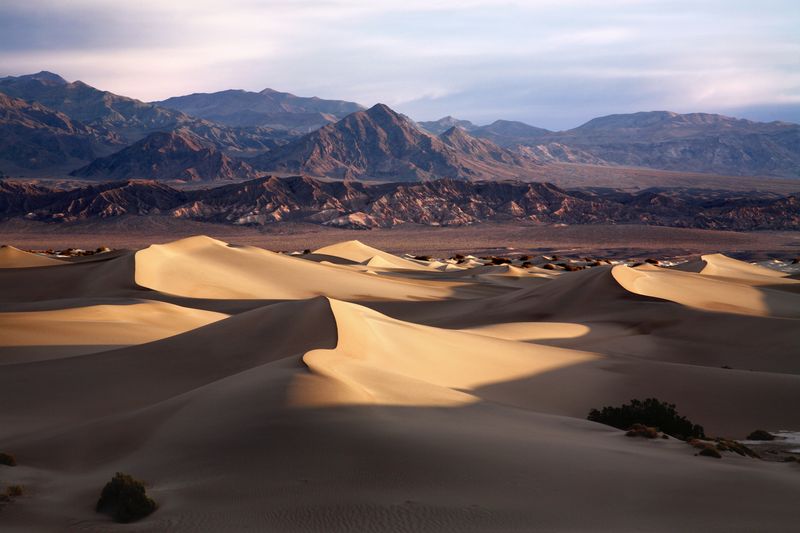
Death Valley National Park
Death Valley in summer? Absolutely. The largest national park in the lower 48 states, Death Valley remains a popular destination to explore during the summer–even when extreme heat reigns supreme in the park’s 3.4 million acres. The Oasis at Death Valley offers a tranquil and cool respite in the desert with date palm trees, lush gardens, and pools. It’s legendary not only for its location, but for the movies and movie stars that loved it (read: Clark Gable, Ronald Reagan, and George Lucas).
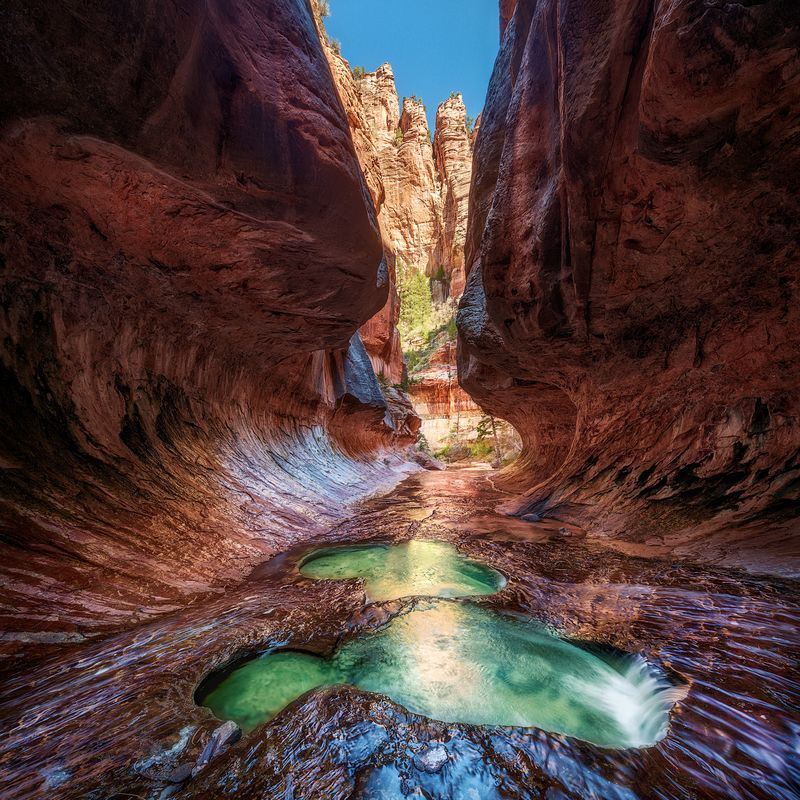
Zion National Park
Zion National Park, located in Utah, is one of the most beautiful places on earth with its apricot-colored canyons and breathtaking views. The name "Zion" means a place of peace and refuge. As a sanctuary with over 146,000 acres of cliffs, canyons, diverse plant and animal life, and uninterrupted beauty, Zion is well-named. Chances are you know of this park because of Angel’s Landing, one of the most dangerous hikes in the country, but Utah’s first national park also boasts waterfalls, the Emerald Pools, numerous all-ages hiking trails, and steep, red sandstone cliffs. Zion is only 166 miles from Las Vegas, but skip the strip and stay in the park at Zion Lodge.
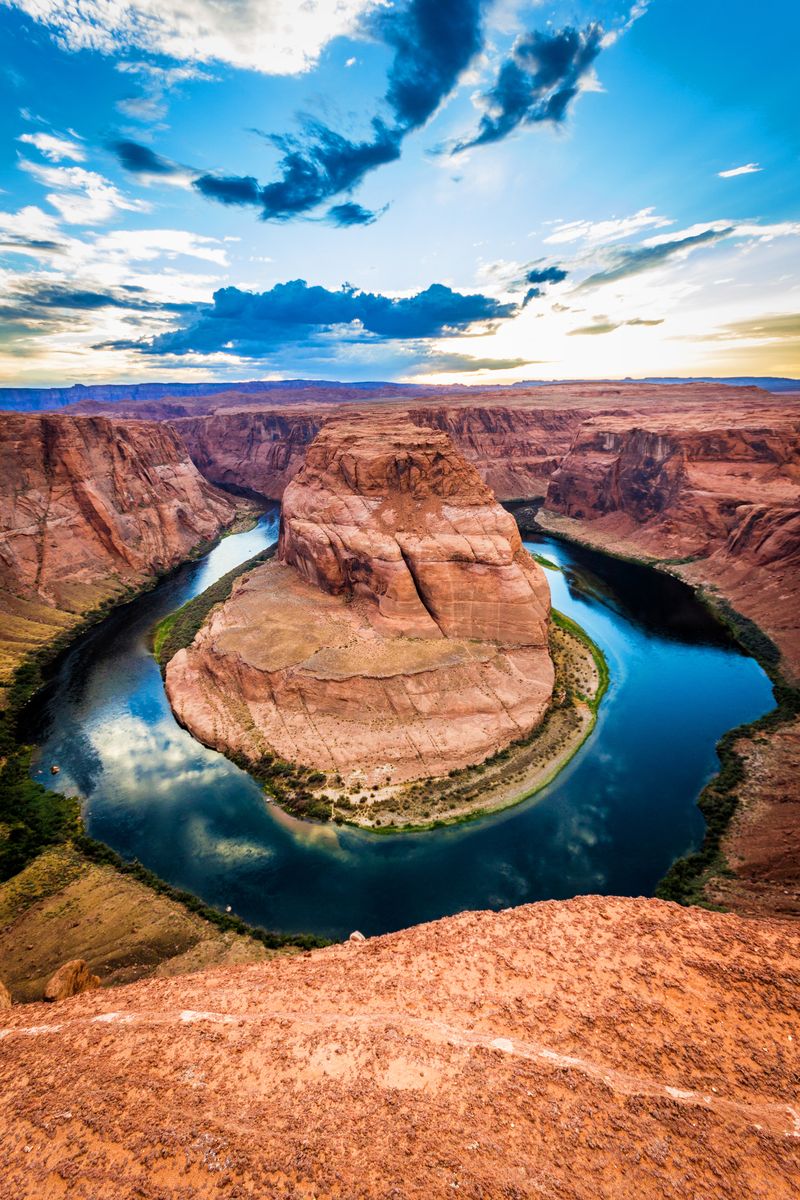
Grand Canyon National Park
The South Rim of the Grand Canyon is a high desert with an altitude of 7,000 feet, so while summer days can find average temperatures in the 80s, at night those temperatures can drop down to the 40s. Get a glimpse below the rim by taking a short walk from the trailhead at Bright Angel Trail in the Historic Village. The Grand Canyon Railway Hotel is 65 miles away in Williams, AZ where the Grand Canyon Railway starts its daily round trips to the South Rim. It runs from there on Route 66 to the Historic Village, just steps from El Tovar, Hopi House, Bright Angel, and all of the attractions found at South Rim.
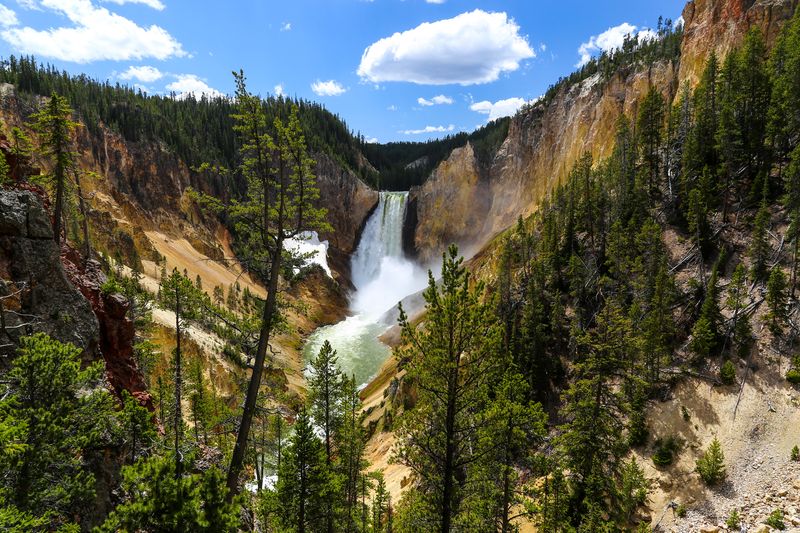
Yellowstone National Park
Yellowstone National Park is famous for dramatic canyons, wildlife, hot springs, alpine rivers, and incredible views. Plus, the popular Old Faithful Geyser. Established in 1872 as the first national park, Yellowstone is known for grizzly and black bears, wild bison, wolves, giant waterfalls, and the largest concentration of active geysers on Earth. The historic park sits in northwestern Wyoming, partly in southern Montana and eastern Idaho, taking up over 2.2 million acres of land, which is larger than the states of Rhode Island and Delaware combined.
Sage Lodge, situated on more than a mile of Yellowstone riverfront, is a destination for anglers, hikers, and adventurers of all levels, and blends the raw and rugged beauty of Paradise Valley with distinctive Montana hospitality. This year, most entrances and roads opened for the season on May 14, 2021 and will close ahead of the winter season starting October 12, 2021.

Yosemite National Park
More than 10,000 years ago, Native Americans claimed Yosemite Valley as home, and settlers began coming to the area in the 1850s during the California Gold Rush. While some found the gold, others found something more—the unforgettable beauty of this endless wilderness.
A true national treasure, Yosemite National Park is 1,200 square miles of wide valleys, glorious meadows, age-old sequoias and vast, beautiful lands. This iconic American national park is known for its epic cliffs, El Capitan, Half Dome, and the granite walls more than twice as high as the Empire State building.
A historic hideaway just minutes away from the park is the Sierra Sky Ranch, Ascend Hotel Collection. This hidden gem is a 145-year-old converted mountain ranch house located near the southern entrance of the park. This year the season will open on May 21, 2021 and close on September 30, 2021.
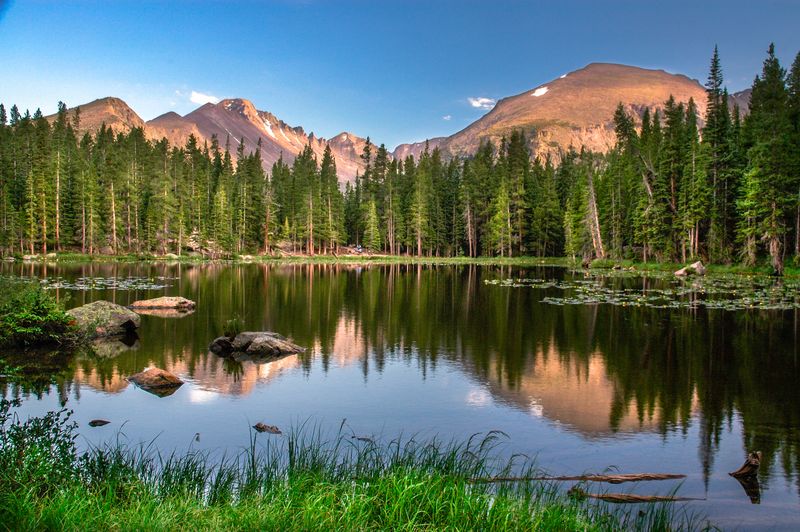
Rocky Mountain National Park
With majestic mountains, tundra wildflowers, and abundant wildlife, you’ll feel like you’re on top of the world exploring Rocky Mountain National Park’s 415 square miles of rugged postcard-perfect peaks, lakes, and trails. Drive (or bike) along the highest continuous motorway in the U.S., Trail Ridge Road, climbing to an elevation of over 12,000 feet. As one of the most popular national parks in the U.S., reservations are required to enter from May 28 through October 11. The basecamp of the park, Estes Park, offers visitors an enchanting town with historic lodging, including the iconic 110-year old Stanley Hotel, famous for inspiring Stephen King’s novel, The Shining, and brings in visitors from all over the world.
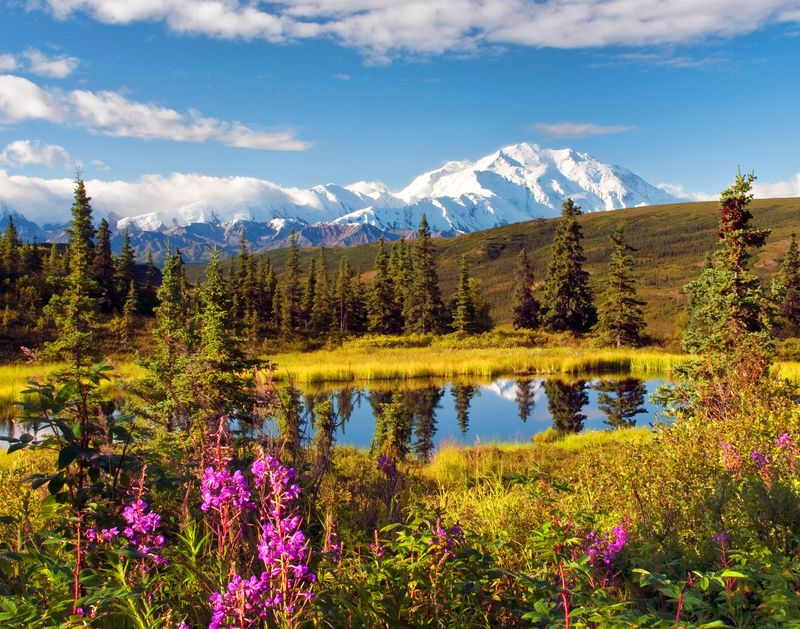
Denali National Park
Denali National Park and Preserve lies deep within the Alaskan Bush and encompasses six million acres of tundra, taiga, and alpine ecosystems. Established in 1917, the big draw each year is Mount Denali itself, which at 20,310 feet stands as the tallest mountain in North America. With only one restricted-access road in the park, most visitors take a bus ride deep into the park for a chance to explore the beauty and spot wildlife, namely Alaska’s big five: bears, moose, caribou, Dall sheep, and wolves. While some choose to camp at one of the park’s six campgrounds, you can go further into the park and stay at one of the remote lodges that are only accessible by private bus, like Denali Backcountry Lodge.
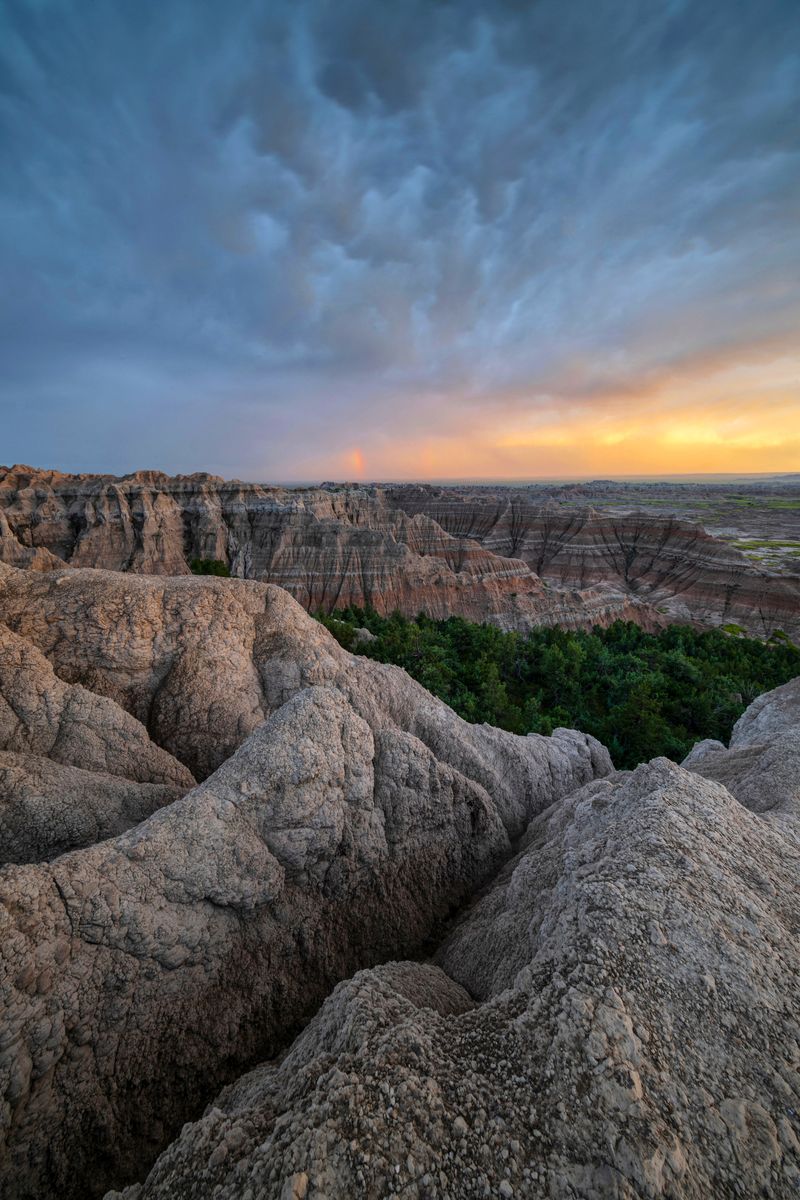
Badlands National Park
In America’s heartland, near the western edge of South Dakota, you’ll find Badlands National Park, one of the most inexplicable landscapes in the country. With a martian-like scenery that boasts abundant wildlife in a maze of buttes and canyons, majestic granite spires, pine-covered peaks and unique rock outcroppings, the Badlands are a testament to the power of nature. Nothing compares to witnessing the "magic" hours of sunrise and sunset in the Badlands. As subtle shades of red and yellow transition into deeper and richer colors across the land, the sunset casts dramatic shadows off of the pinnacles and painted gullies. Cedar Pass Lodge, located just next to the Ben Reifel Visitor Center in Badlands National Park, offers cabins, tents, and RV sites and group camp sites.
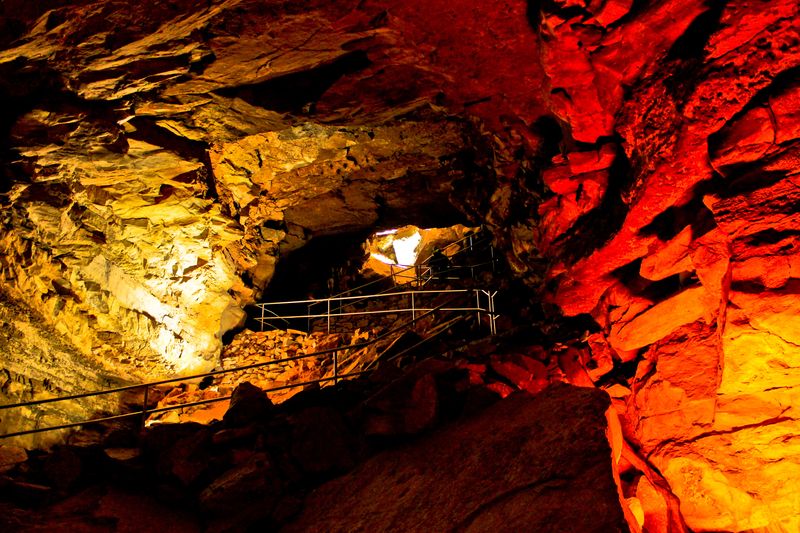
Mammoth Cave National Park
Near Bowling Green, Kentucky, Mammoth Cave National Park is home to the world’s largest underground cave system with over 400 known miles of passageways. The park offers an intimate view of 350 million-year-old rocks, incredible domes, and dripstone formations, including the famous Frozen Niagara section of the cave. Affectionately known as "nature’s massive air conditioner," Mammoth Cave stays a cool 54 degrees in the summer and maintains the same temperature during cold winters. The Lodge at Mammoth Cave is a historic and rustic property that offers an array of accommodations from private cottages nestled in the woodlands to terrace rooms that border the Heritage Trail forest.
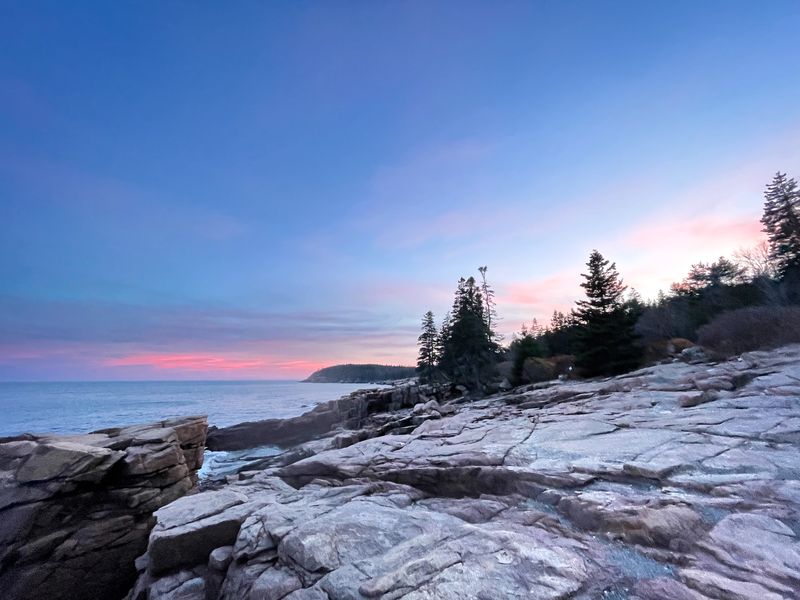
Acadia National Park
An idyllic escape on Maine’s Mount Desert Island, Acadia National Park contains the highest coastal peaks in the U.S. east of the Mississippi River as well as some of the country's most spectacular scenery and flora. In the park, you'll find majestic cliffs, tranquil bays and rocky islands, pristine forests, and sparkling lakes. Visitors to Acadia love its many trails for hiking and biking set amongst an abundance of natural beauty that includes colorful wildflowers in spring and stunning foliage in fall.
Acadia National Park is considered the "Crown Jewel of the North Atlantic Coast" for good reason—its stunning landscapes teems with wildlife, coast-hugging hikes, dramatic cliff overlooks, and crystal-clear lakes and ponds. The charming town of Bar Harbor, close to the park, has numerous historic sea "cottages." The Bar Harbor Grand Hotel, a replica of the historic Rodick House, is located just minutes from the park.
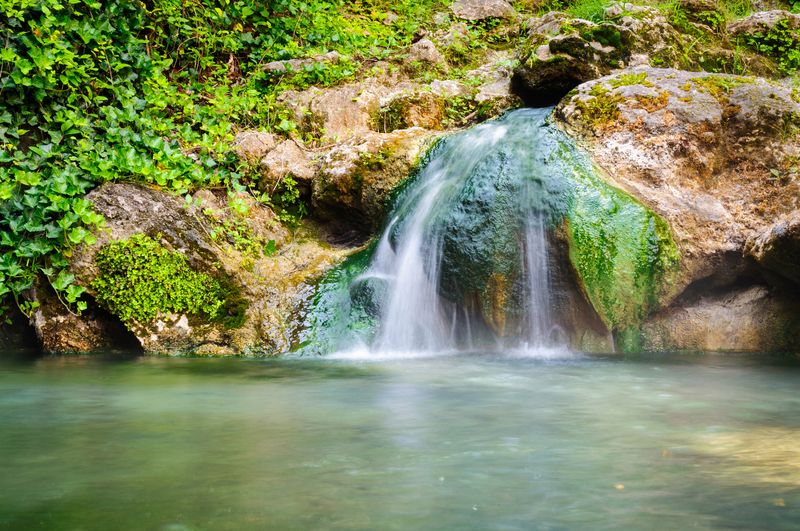
Hot Springs National Park
Hot Springs National Park in Arkansas is comprised of 47 hot springs, which were the first and continue to be the only federally-controlled hot springs in the United States to be managed for both public health and consumptive use. With its natural healing properties, the city of Hot Springs has discreetly drawn in celebrities and wellness seekers for centuries. In addition to its thermal springs, this national park features more than 30 miles of hiking trails, scenic drives, hot water cascades, picnic areas, and campsites through the Ouachita Mountains. The Reserve at Hot Springs is a new luxury property sitting atop four expansive acres of bucolic land.

Great Sand Dunes National Park
Sink into the highest mountains of sand in North America. Nestled in a spot where the Sangre de Cristo Mountains buckle inward, the dunes within the borders of Great Sand Dunes National Park have been building and sifting for eons—the result of the San Luis Valley's unique wind patterns. A sandbox of epic proportions, the entire dune field encompasses 30 square miles and the tallest dune towers 750 feet high. The kid in every visitor will love to sled down the sand year-round and plunge into the soft-sand tracks of those who climbed ahead of them. Aside from the dunes, you'll find picnicking, hiking and camping opportunities, the challenging four-wheel scenic drive on Medano Pass, horseback-riding trails, the mysteriously appearing and disappearing Medano Creek, ranger-led nature walks and a couple of 13,000- and 14,000-foot peaks to climb.
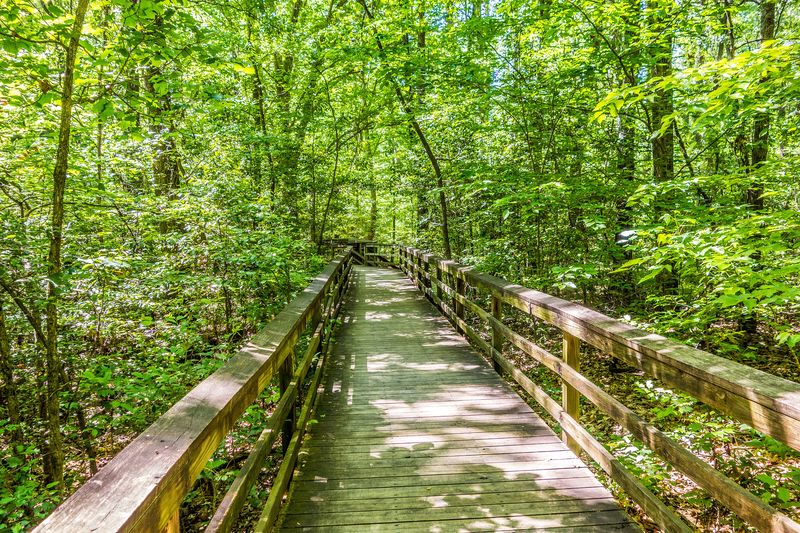
Congaree National Park
Established in 2003, Congaree National Park in South Carolina is home to astonishing biodiversity. The Cedar Creek waterway passes through a primeval old-growth forest that contains some of the tallest trees in eastern North America. Opportunities are plentiful for viewing various types of wildlife such as river otters, deer, turtles, wading birds, and even the occasional alligator. As part of their annual mating ritual, the fireflies at Congaree National Park synchronize so they blink in unison. This is an incredibly rare phenomenon, happening in only a dozen or so locations in the world. Firefly synchronization occurs for two to three weeks toward the end of May/early June each year.
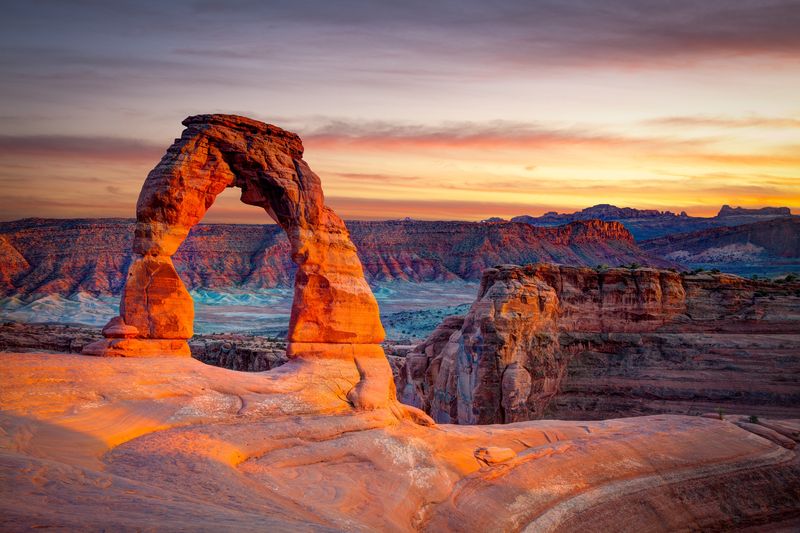
Arches National Park
A red rock wonderland, Arches National Park is a landscape of contrasting colors, landforms, and textures unlike any other in the world. The iconic Delicate Arch loops 65 feet out of an orange bluff, according to its own invented axes, but every single hike in Arches National Park will show you something that changes your perspective: the metaphysics of Landscape Arch; a Courthouse and a Tower of Babel on Park Avenue; the lost souls in the Fiery Furnace. Stay at Under Canvas Moab, located on 40 acres seven miles north of Moab, Utah, and blending into its dramatic surroundings—deep canyons and towering plateaus create a raw landscape of immense power.
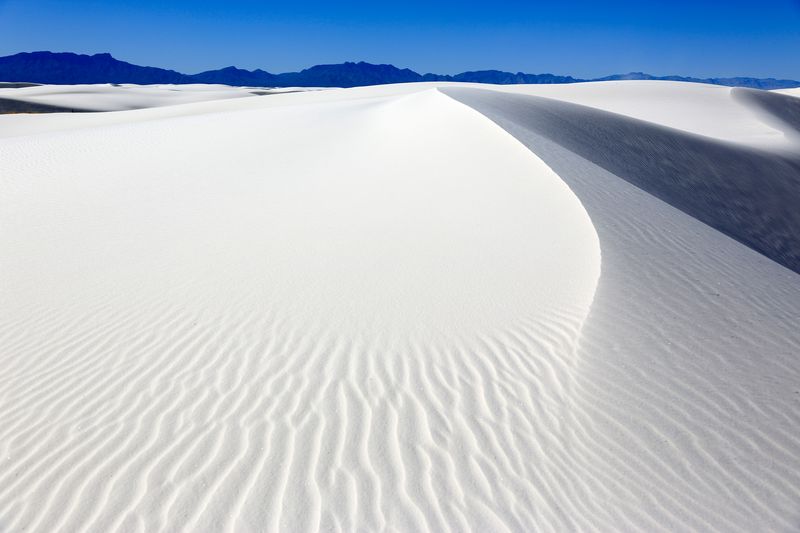
White Sands National Park
The largest gypsum dune field in the world is located at White Sands National Park in south-central New Mexico. This region of glistening white dunes is in the northern end of the Chihuahuan Desert within the Tularosa Basin. With over 275 square miles of desert to explore, the dunes have naturally formed into perfect waves that are just right for sledding down. One of the best ways to experience the park is on a guided full moon hike—a monthly opportunity to revel in the glow of the full moon reflecting on the white sands.
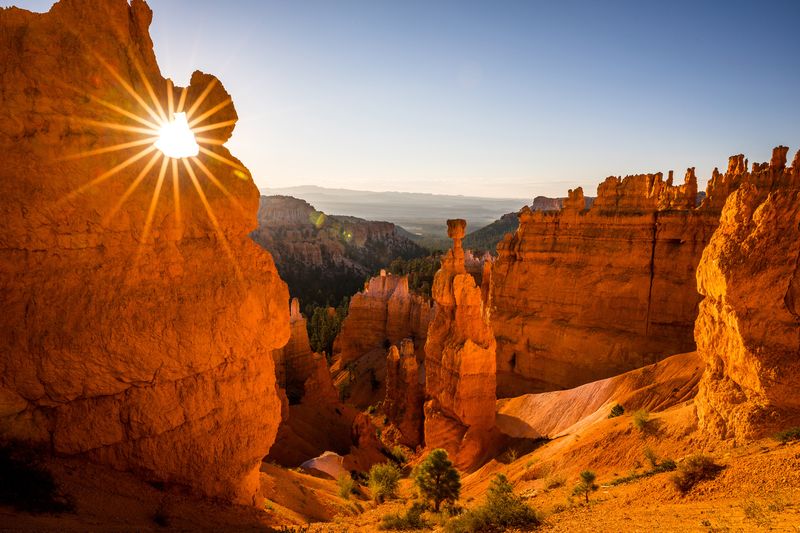
Bryce Canyon National Park
Perched upon a plateau at the top of the Grand Staircase, Utah’s sprawling Bryce Canyon National Park is known for its hoodoos– ancient crimson-colored, spire-shaped rock formations. Bryce Canyon was established as a National Park in 1924 to preserve its unforgettable landscape made up of giant natural amphitheaters that generate mind-blowing echoes. Visitors can explore the park from Bryce Pioneer Village, a family-friendly campground located 10 minutes from the park’s main entrance.
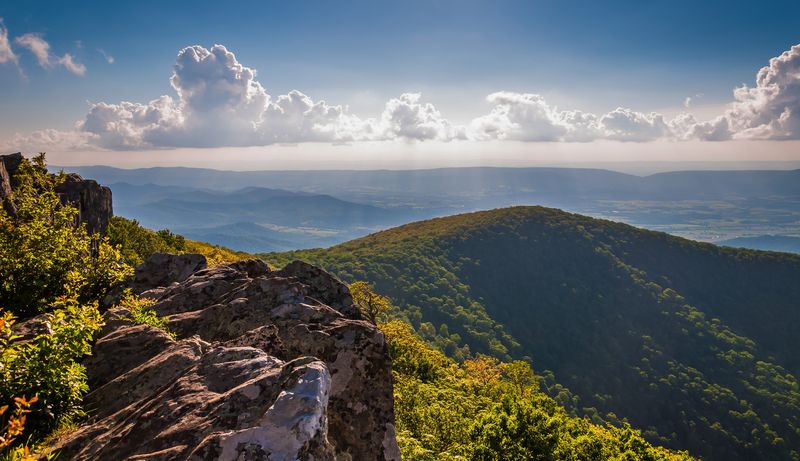
Shenandoah National Park
Virginia’s Shenandoah National Park presents the majesty of the Blue Ridge Mountains, the Shenandoah Valley, and the heart of the Appalachian Trail. Stunning mountain views, waterfalls, and 75 overlooks on iconic Skyline Drive are waiting. Located only an hour and a half west of Washington, D.C., Shenandoah offers 516 miles of beautiful hiking trails through forests, streams, and along the mountain ridge of the Appalachian Trail. The park has an abundance of wildlife as the densest population of black bears in the U.S., 50 other mammals, and 200 species of birds. There are three lodges run by the National Park in Shenandoah—the largest, Skyland Lodge, offers sweeping views.
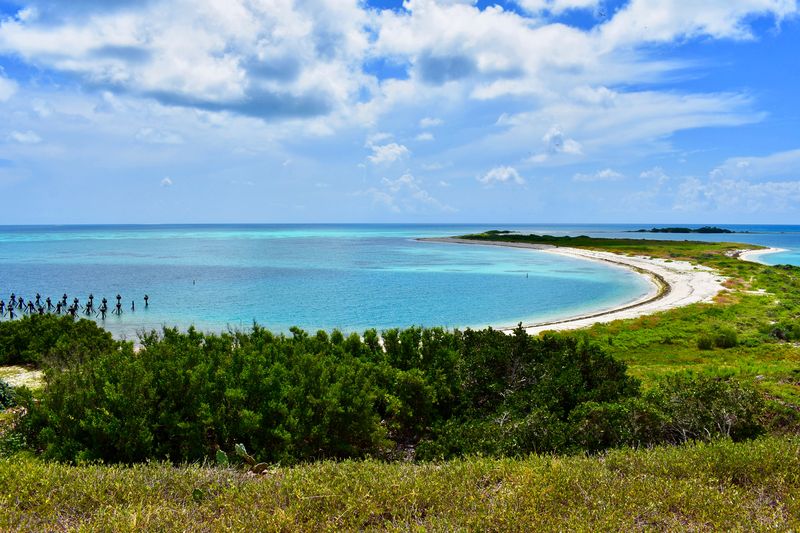
Dry Tortugas National Park
Dry Tortugas National Park, located 70 miles off of Key West and accessible by boat or seaplane, boasts seven islands and is known as the home to the magnificent 19th century Fort Jefferson, picturesque blue waters, coral reefs, sea turtles, and a vast assortment of birds. Casa Marina, a Waldorf Astoria resort, is located on Key West’s largest private beach and can arrange both boat charters and seaplanes for guests to take to this under-the-radar national park.
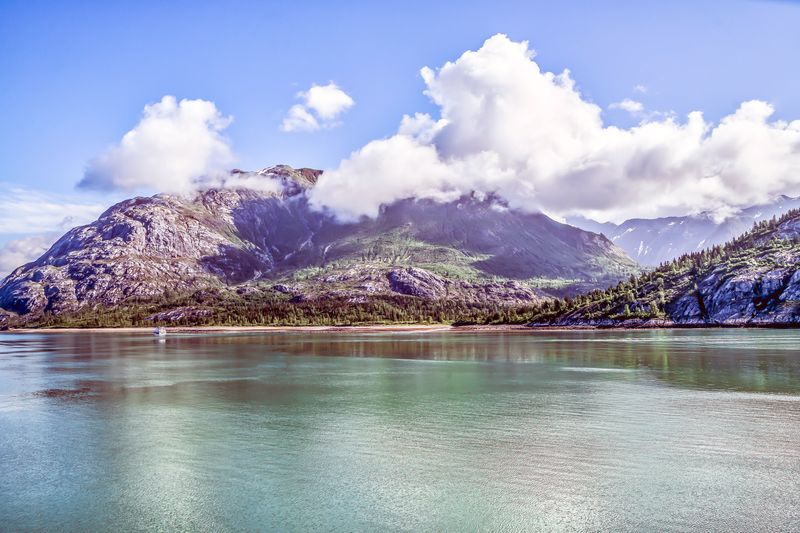
Glacier Bay National Park and Preserve
Named a World Heritage Site, Glacier Bay National Park and Preserve encompasses 3.3 million remote acres in Alaska’s Inside Passage. It's an icy refuge for orca, humpback whales, endangered Stellar sea lions, birds, coastal bears, and eagles. Glacier Bay Day Boat Tours takes visitors to see up-close views of the majestic Margerie and Grand Pacific Glaciers. The newly-opened Huna Tribal House is the first permanent Hoonah Indian clan house where visitors learn first-hand about Huna Tlingit history, culture, and a general way of life from tribal elders.
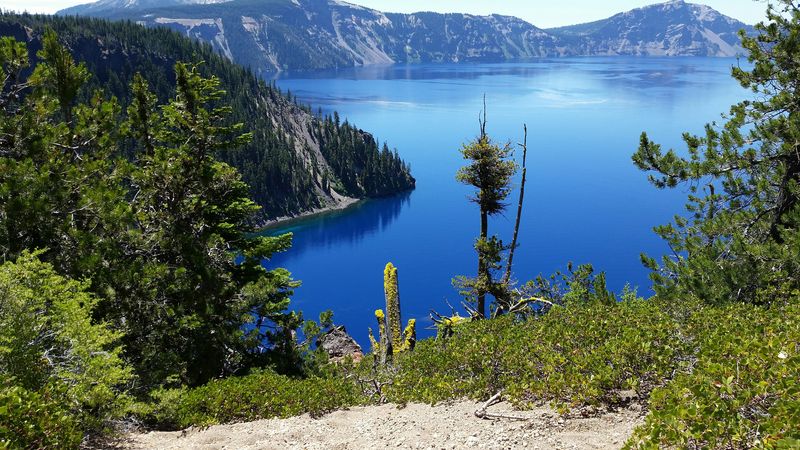
Crater Lake National Park
Crater Lake National Park is perched high among Oregon’s Cascade Mountains. At nearly 2,000 feet deep, Crater Lake is the deepest lake in the U.S. It has a stunning deep blue hue and may be the cleanest and clearest body of water in the world. The magnificent lake is the result of the eruption of the 12,000-foot-volcano Mount Mazama more than 7,000 years ago, which triggered the mountain’s collapse. Over hundreds of years, rainfall and snowfall filled the crater to form the lake. For visitors traveling down the Rogue-Umpqua National Scenic Byway, also known as the Highway of Waterfalls, the historic Steamboat Inn is a favorite stop overlooking the wild and scenic North Umpqua River.
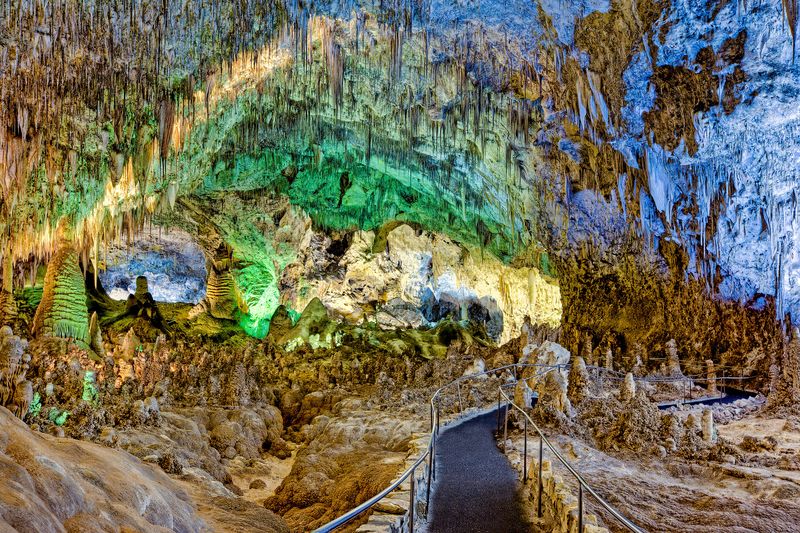
Carlsbad Caverns National Park
New Mexico’s Carlsbad Caverns holds a staggering 119 caves beneath the surface of the Chihuahuan Desert. Sulfuric acid dissolved away the natural limestone to form the caverns, making this natural phenomenon a spectacular sight. Mesmerizing stalactites grow from the ceiling, tunnels are available to explore, and distinct wildlife in the unique ecosystem create a park experience unlike any other. Wander around this otherworldly site at ground level or travel underneath to make your way through the maze-like tunnels.
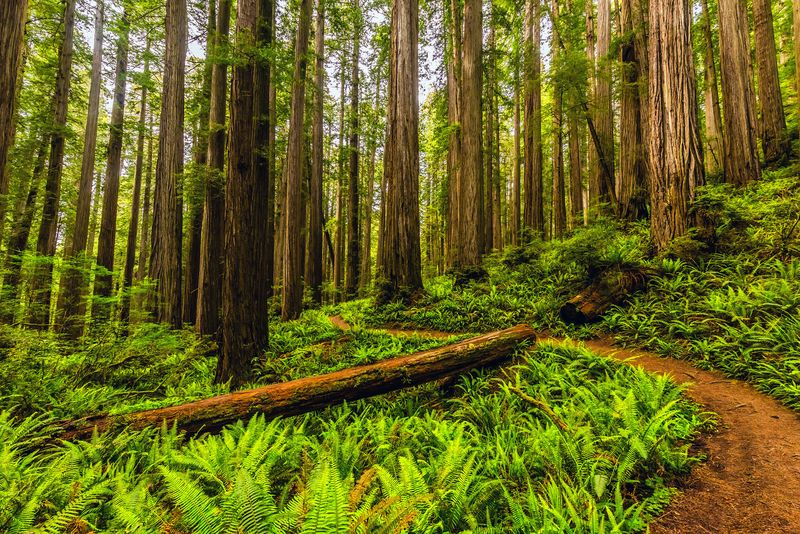
Redwood National Park
With more than 110,000 acres of Redwood forest and 50 miles of scenic coastline, Redwood National Park is the crown jewel of Northern California, housing California’s impressive state tree: the Redwood. Located in Humboldt County, Redwood National Park is home to massive trees that grow over 350 feet tall and are over 150 years old. Visitors can walk, bike, or horseback ride along 200 miles of trails in the park. Famous hiking trails include Newton B. Drury Scenic Parkway and James Irvine Trail, which allow visitors to take in the picturesque views of these towering beauties. Nature enthusiasts can spend the night at Gold Bluffs Beach Campground and take a sunrise walk along the coast.
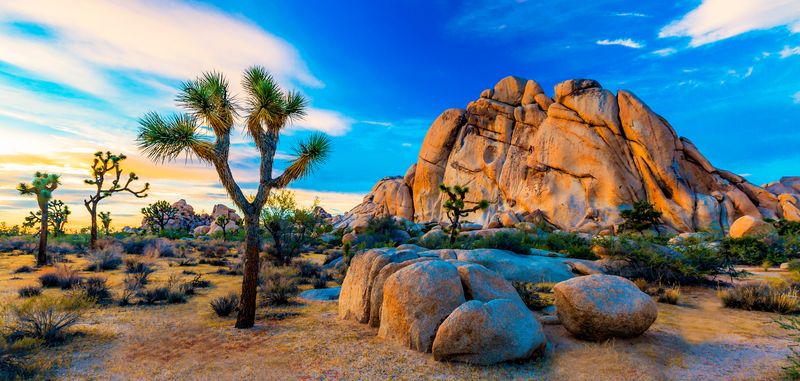
Joshua Tree National Park
With nearly 800,000 acres of mystical beauty, Joshua Tree National Park is undoubtedly one of the world’s most incredible natural desert treasures. Having been designated one of the few International Dark Sky Parks in the country, Joshua Tree National Park offers incredible stargazing, as well as a wide range of hikes for all ages and rock climbing/bouldering for the more adventurous travelers. The park is home to a variety of plant and animal species, but none as unique or prevalent as the park’s namesake: the Joshua tree, standing majestically across the vast topography.
Get exclusive access to fashion and beauty trends, hot-off-the-press celebrity news, and more.
Michelle Stansbury is a San Diego-based freelance writer who writes about travel, food, and relationships. Misuse of the word "literally" drives her figuratively insane.
